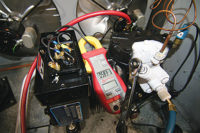
Figure 1: Condensed water vapor freezes into frost. (Photo courtesy of Ferris State University.)
Usually on lower temperature refrigeration applications, the suction line and part of the compressor’s head will get cold. The part of the compressor’s head that gets coldest is where the suction vapors enter before they are compressed. These parts often get cold enough to reach the dew point of the surrounding air. When the air’s dew point temperature is reached from coming in contact with the cold suction line and compressor head, water vapor in the air is cooled to its dew point and will condense on the suction line and head of the compressor. When this condensed water vapor reaches 32°F, it will freeze into frost (Fig. 1). So, frost is simply condensed water vapor or dew, which has reached 32° or below.
SYSTEM SPECIFICATIONS
Consider a low temperature commercial refrigeration application operating with 7° of evaporator superheat and 40° of compressor superheat (Fig. 2). The refrigerated box temperature is 0° with an evaporator temperature of –13°. It is an R-404A system. With an evaporator temperature of –13° and the system having 40° of compressor superheat, the temperature of the refrigerant coming into the compressor is 27° (-13 plus 40). The 27° temperature coming into the compressor is lower than the surrounding air’s dew point, and it is also lower than the freezing point of water (32°), so the dew on the suction line and compressor’s head will form frost. These frost lines are completely normal for this low temperature application refrigeration machine.
Figure 2: Low temperature commercial refrigeration application. (Courtesy of ESCO Press.)
COMPRESSOR FLOODING OR SLUGGING?
Because the system has a compressor superheat of 40°, there is no worry about whether the compressor is flooding or slugging. In review, flooding is liquid refrigerant coming back to the compressor’s crankcase during a run cycle. Slugging is liquid refrigerant or oil actually entering the compressor’s cylinders and/or valve arrangement and being pumped. Again, because the system has superheat at the compressor of 40°, flooding and slugging cannot exist.In order for slugging or flooding to occur, the compressor would have to be experiencing no superheat. In other words, the temperature coming into the compressor would be the same as the evaporator temperature (-13°). This would indicate that there was no compressor superheat and liquid refrigerant was entering the compressor.
The amp meter on the air cooled, semi-hermetic compressor (Fig. 1) is reading 5.87 amps. The rated load amps (RLA) of the air-cooled, semi-hermetic compressor is 6.5 amps. We are still quite below the RLA of the compressor. However, if liquid was coming back to the compressor, the amp meter would be above the RLA rating of the compressor. A mixture of high-density vapors and liquid is hard for the compressor to pass, causing high amp readings. Valve plate damage usually occurs in these situations. Air-cooled, semi-hermetic compressors bring the refrigerant gas right back to the head of the compressor and then to the suction valves directly. This is why it is very important to have some superheat to ensure that vapor and not liquid is returning to the compressor. This is not the case for refrigerant cooled compressors where suction gases come into the end bell of the compressor and then pass through the motor windings before entering the valve arrangement (Fig. 3).
In either scenario, whether the system has compressor superheat and doesn’t have compressor superheat, both the suction line and compressor’s head would still be frosted. This is why it is of utmost importance for service technicians to measure superheat at both the evaporator and compressor to make sure the compressor is protected from slugging and flooding.

Figure 3: Refrigerant cooled semi-hermetic compressor. (Courtesy of ESCO Press.)
MEASURING COMPRESSOR (TOTAL) SUPERHEAT
In review, compressor superheat or total superheat is all of the superheat in the low side of the refrigeration system. Compressor superheat consists of evaporator superheat and suction line superheat. A service technician can measure total superheat by placing a thermometer, thermocouple, or thermistor at the compressor inlet and taking the temperature. A pressure reading will also be needed at this same location.For example, consider the example below for a R-404A system with a low side pressure taken at the compressor of 21 psig or –13° and a compressor inlet temperature of 27°. The pressure gauge reading on the low side of the system of 21 psig tells the service technician that there is a –13° evaporating temperature. The compressor superheat calculation is as follows:
Compressor inlet temp. – Evaporator temp. = Compressor superheat
27°F – (-13°F) = 40°F
In this example, the compressor superheat is 40°. It is possible to have a TXV adjusted to control the proper amount of evaporator superheat at the coil and still return liquid refrigerant to the compressor at certain low load conditions. It is recommended that all TXV controlled refrigeration systems have some compressor superheat to ensure that the compressor does not see liquid refrigerant (flood or slug) at low evaporator loads. The TXV, however, should be set to maintain proper superheat for the evaporator. This will ensure that the compressor will always see refrigerant vapor, and not liquid.
Publication date:05/03/2010






